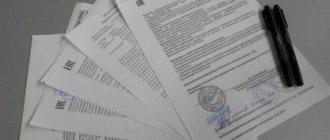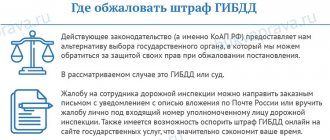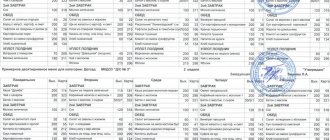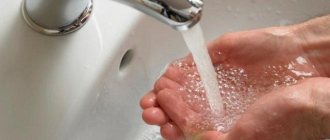The difference in using hot water between a country house and an apartment mainly lies in the fact that in an individual autonomous heating system you can always control and adjust the temperature and pressure of the coolant flowing through the pipes, but in a centralized heating system these parameters are set in the boiler room, and the owner of the apartment does not cannot affect the adjustment of the characteristics of the working fluid. But what the hot water temperature should be can be controlled in the apartment. This must be done at least to ensure that the temperature of the hot water supply and heating complies with the standards and ensures comfortable living and use of hot water in the bathroom, kitchen and other water points. Therefore, if during the year, instead of hot water of a certain temperature, you receive barely warm or even cold water, then you should think about how and where to write an application in order to achieve the targeted spending of your utility bills.
Standard DHW temperature
How the temperature range is set
Information about what temperature hot water should be in the water supply and central heating is set out in SanPiN 2.1.4.2496-09 (sanitary rules and regulations that determine the temperature of hot water supply and heating) and GOST R 51617-2000 (air temperature in the room when using heating and DHW). The parameters do not change for a long time, as they are determined by the appropriateness of these values - a person should feel comfortable and not experience any inconvenience when using hot water in one form or another.
Since the temperature of the water in the hot water supply depends on the technical solution for the water supply of the house or apartment, the temperature for the hot water supply and hot water supply routes will always be different. The temperature in the DHW system should not go beyond 600C-750C for all water points. If the DHW circuit is a closed type, then the minimum permissible water temperature should be 500C, for an open DHW it is 600C.
Housing and communal services standards contain the following permissible deviations: a decrease in temperature by 50C at night (from 0.00 to 5.00) and a decrease in temperature during the day by 30C (from 5.00 to 0.00). These rules are based not only on the comfort of using hot water, but also on the safety of residents. If the deviation from the regulations exceeds the specified limits for every 30C, residents have the right to demand that the payment for hot water supply be reduced by 0.1% for every 60 minutes of violation. If during control temperature measurements the thermometer showed a temperature of ≤ 400C, then payment for utilities is carried out according to the tariffs for cold water supply. To confirm the data, it is necessary to carry out an official measurement and draw up a report certifying the deviation from the SanPiN regulations.
If the water in the pipes is hot, it can cause burns, especially to children. In addition, modern pipe lines are made of plastic or metal-plastic, and high water temperatures have a destructive effect on them. When the temperature in the pipes exceeds 760C, a violation of the regulations occurs, just as when the temperature decreases to 560C, and residents have the right to write an individual or collective complaint against the utility company.
Normal temperature range
There is also another rule that forces you to regulate the hot water supply in the apartment within 60-750C. In warm water, microorganisms and pathogenic bacteria begin to multiply quickly and actively. Therefore, the temperature limit must cover the values. In which a person will not receive burns, but microorganisms will die without causing harm to consumers. This rule is especially relevant for children's and medical institutions.
Legionella, a bacterium that causes pneumonia of unknown etiology, multiplies well in warm fresh water. This means that in most cases the disease is not identified or is identified incorrectly, which leads to incorrect treatment with corresponding results, including death. But in hot water, Legionella dies depending on the temperature:
- At 70−800C, the water is completely disinfected - all bacteria die instantly;
- At 660C, legionella dies in 120 seconds;
- At a temperature of 600C, microorganisms die in 22 minutes;
- At 550C, bacteria die in 6-7 hours;
- At a temperature of 20−45°C, the active phase of legionella reproduction begins;
- At temperatures ≤ 20°C, Legionella cannot reproduce due to the cold.

Based on the above, it becomes clear that at high temperatures, the use of hot water is safe in terms of morbidity, but unsafe in terms of possible burns:
- When the water temperature in the hot water supply is ≤ 500C, there is a sufficient degree of risk of getting a burn;
- At temperatures ≥ 650C, skin burns occur within 2-5 seconds;
- At a water temperature of 55 °C, a burn can occur in one and a half minutes.
The problem is solved as follows: when hot water is centrally distributed to residential buildings, it is first stored in tanks where a temperature sufficient to kill bacteria is maintained. As hot water supply is supplied to the house, its temperature drops to a regulated level, and the use of hot water should be carried out only with the simultaneous connection of cold water supply to the house.

Burns depending on the water temperature in the DHW system
What is GW admixture?
The addition of hot water occurs in faulty mixers or distribution units , where there is a simultaneous connection of hot water and hot water pipelines.
If the pressure of hot water exceeds that of cold water, the water begins to gradually squeeze out the cold flow and fill the cold water pipeline. The opposite situation also occurs, when hot water is replaced by cold water.
The only way to deal with these problems is to identify the problem unit and repair it or replace it with a better model. More details can be found here.
Water quality in hot water supply
What is regulated by Snip, GOST and SanPin ? SanPiN Resolution 2.1.4.2496-09, clause 2.4 regulates the temperature standards for transporting water to residential buildings, and the maximum temperature limits for hot water in an apartment are 600C to 750C. In addition, hot water in the apartment should not have any foreign odors or taste impurities. If for some reason the temperature regulations are not observed, a complaint can be filed against organizations involved in the delivery of hot water to residential buildings in order to eliminate the cause of the violation of GOST. In each region, the application form will be original, so here are a few examples of such applications:

Statement of violation of hot water standards
https://youtu.be/1viQbRTzQ6A
Is it possible to swim in it?
Some argue that hot water can increase blood pressure and create a threat of strokes, heart attacks and other undesirable consequences. Others note a relaxing and tonic effect, the ability to relieve stress, and relieve negative emotions. Most likely, both are right.
Only people in good health who do not have problems with the cardiovascular system can swim in hot water. Others should limit the bath temperature to 40°.
This article will tell you more.
How to measure temperature
To find out what hot water temperature is normal or not, first independent measurements are taken, and only after this it is necessary to invite official representatives of utility services to carry out official measurements and draw up relevant supporting documents.
To measure the temperature of hot water yourself, open any hot water tap and drain the water for 180 seconds, then fill any container with water (for example, a liter jar) and measure the temperature with a regular household thermometer. To do this, lower it into the jar for a few minutes and wait until the thermometer readings stop changing. If the thermometer shows too low or too high values, contact the utility companies with appropriate statements. If for some reason it is impossible to make a written application, then the dispatcher is obliged to accept an oral telephone complaint or an application for a control measurement by official representatives of the company. If the violation is eliminated without control measurements, the dispatcher is obliged to inform the applicant about this.
If the reason why the temperature schedule is violated is unknown, then a representative of the utility organization is obliged to arrive at the applicant for an official no later than 120 minutes after receiving any application - oral or written. Other time intervals are discussed with the applicant.
Repeated measurements of the DHW temperature are made by an official, after which a report on measuring the water temperature must be drawn up, and on the basis of this document, in the event of an obvious violation, the payment for DHW must be recalculated at other tariffs. The act is drawn up in two copies, one copy is sent to the management company, the second must be with the owner of the property.

DHW control measurement report
Cooler temperature
The cooler design has two water temperature sensors . One is adjusted to a temperature of 68-85°, and the second - to 90-98°. This value should be considered the operating maximum for most coolers.
It should be borne in mind that over time, device heaters somewhat reduce their capabilities, which is why the maximum temperature may decrease by several degrees.
Read more here.
How to write a complaint to the management organization
If the hot water temperature schedule is violated constantly and regularly, then residents can write a collective or individual complaint against the management company that transports hot water. For a complaint to have legal force, it must be drawn up in a legally competent manner, citing facts and arguments. Any notary or lawyer can provide assistance in drawing up such a document.
The header of the document must contain the correct name of the organization against which the complaint is being made and the name of the responsible manager (if known to the complainant) to whom the document is addressed. Below are the personal details of the applicant: last name, first name, patronymic, address where the applicant is registered, contact information for subsequent communication regarding the application.
General complaint form:
- Document title;
- A statement that the temperature schedule is violated when providing residents with hot water according to the application form in accordance with Federal Law No. 195 under Article 7.23;
- The statement itself contains a description and essence of the complaint. It is necessary to write in the document that independent and control measurements of the hot water temperature were carried out with information from the previously drawn up report: date of measurement, personal data of the employee who carries out the control measurement of hot water temperature, temperature parameters;
- The complaint should end with a requirement to eliminate violations in the DHW supply or eliminate violations of the DHW temperature regime. In addition, you can oblige the company to inform you about the implementation of relevant work;
- At the end of the written complaint, the date of its preparation is indicated and the signature of the applicant is affixed. The complaint must be submitted and registered in 2 copies. The document is sent to the management organization by registered mail with notification, or is independently delivered by the applicant to the company’s office.

The second copy of the complaint, which remains with the applicant, must contain a mark on the acceptance of the document, and it must also indicate the date of receipt of the application and bear the seal of the management organization. The response to the complaint must be received no later than 30 working days.
What is its color, how is it displayed in plumbing?
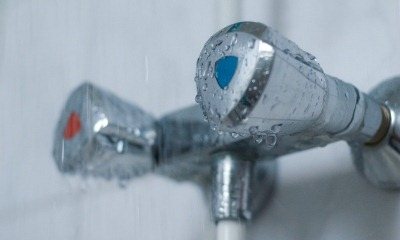
Pipelines with water according to GOST are indicated in green. This is a general marking that can be applied either as a solid color or using transverse rings located in conspicuous places.
On plumbing fixtures, control valves are painted differently . The usual designations are blue (cold) and red (hot water).
This is due to the psychological perception of temperature. Blue is the color of ice, and red is the color of hot metal, fire. Read about hot water pipes here. You can find out which side the hot water is on the mixer here.
How to request a recalculation if you deviate from the temperature schedule
How is the payment for hot water recalculated if the temperature schedule for hot water supply is violated? Having a control measurement report in hand, confirmed by an official of the management company, you need to visit the management organization to arrange a recalculation of the hot water service.
If the DHW temperature at the time of measurement was ≤ 400C, then the DHW consumption must be paid, in accordance with the law, according to tariffs for cold water. Thus, to carry out an official recalculation, you need to have on hand a certificate of measuring the DHW temperature. Before drawing up the act, an application for measurement is submitted; the document must contain the registration number, the time of acceptance into office work, and the data of the dispatcher who accepted the application. If the report was drawn up during a technical failure, and subsequently the temperature of the hot water returned to normal, the dispatcher is obliged to notify the applicant about this, indicating the timing of emergency operation of the hot water and the time to repair the breakdown in the pipeline.
If the hot water temperature is constantly low and the reasons for this decrease are unclear, you should decide with a company representative (dispatcher) about the time to carry out a control measurement of the hot water temperature. After measuring and drawing up several copies of the act according to the number of participants in the measurement, the document is sent to the authorities that approve or do not approve the need for recalculation.
In winter, measurements are taken taking into account the outside temperature and the thermal insulation conditions of the hot water supply line.

Temperature graph summary for DHW heat supply
Recalculation requirement
Having in hand one copy of the act, which indicates the fact of violation of the adopted regulations for the provision of utility services, a request is sent to the management company to recalculate the payment for hot water supply. The period for which you can demand a reduction in payment ends with the date the violation is eliminated. Paragraph 112 of Decree No. 354 sets the end time for a violation of the quality of the supplied service:
- Date of informing the management service dispatcher about the elimination of the discrepancy;
- The date of the final inspection, during which no violation was found.
If the water in the tap does not become hotter and the second check was not carried out, then the period for providing services of inadequate quality will not be completed. This must also be mentioned in the requirement. In addition, you can request a recalculation even if there is no hot water at all.
Important! Refusal to recalculate from the management company is not legal. In this case, you can send an application to Rospotrebnadzor, the prosecutor's office or the magistrate's court.
Features of measurements
- When measuring the temperature of the hot water supply, the water from the tap should be drained for at least 2-3 minutes;
- The draining time depends on the DHW supply pattern to the metering tank (for example, from an “independent” pipe or from a valve in the bathroom or kitchen).
The Code of the Russian Federation on Administrative Violations contains Article 7.23, which provides for punitive or administrative sanctions for violating the regulations for providing the population with hot water supply. Therefore, measurement and subsequent actions must be carried out officially and documented in order not only to establish the fact of a violation, but also to determine the exact time frame within which payment for DHW services will be recalculated. In this case, the initial period is considered to be the time of drawing up the measurement report, the final date for recalculation is the date of checking the compliance of the temperature regime of the hot water supply after eliminating the accident, breakdown or other reason for the violation of the schedule. If the management company refuses to recalculate, the applicant has the right to file a complaint with Rospotrebnadzor or the courts.

Sample complaint to Rospotrebnadzor
If violations fall within the scope of Federal Law No. 195 under Article 7.23, then the defendant may be fined, and the amount of the fine for an individual executing person may be 500-1000 rubles, for an organization – 5000-10000 rubles.
By paying for utilities, you have the right to demand that the management company perform your duties in full, and receive the appropriate quality of services and products for your money. Therefore, if you see that the service does not correspond to what was declared, do not be afraid to defend your rights and demand that the company providing the services fulfill its obligations. If you have complete information about DHW standards, temperature schedules and permissible deviations, you can challenge the unlawful actions of service provider companies, supporting your claims with relevant documents: measurement reports, applications for recalculation of payment for services, correctly completed complaints to higher authorities - Rospotrebnadzor or the court.
What to do if you get burned?
Hot water burns most often occur in the kitchen . In second place are baths and saunas. There are usually no remedies for burns on hand, but they are not immediately required. First of all, you need to relieve the pain, which is best done under running cold water.
If the burn is not too severe, 5 minutes is enough. After this, the burned area should be lubricated with Vaseline or aloe vera gel.
If bubbles appear, do not puncture them. If the pain is very bothersome, you can take ibuprofen or another analgesic.
Read more here and here.
What to do if water does not meet SanPiN requirements
If you have a need to recalculate payments for inappropriate hot water delivery services, then your actions must take place within the legal framework, namely, comply with the requirements of Resolution No. 354 of the Government of the Russian Federation, which establishes the rules for the provision of utility services to consumers.
The requirements according to which your actions as an injured consumer will be regulated:
- If you find a violation, you must notify the dispatcher about it in writing or orally. In any case, do not forget to indicate your contact details - personal data, address, reason for contacting. The dispatcher is obliged to register your request and give it a go;
- In response, the dispatcher must inform you of his data, the registration number of your application and the time of its submission;
- the fact of a violation of the provision of services must be verified by the dispatch service and recorded. To do this, an additional verification of the violation is carried out together with the applicant, about which a report is drawn up. According to paragraph No. 108 of Resolution No. 354, such an inspection must be organized no later than two hours after receiving the complaint. Other times are agreed upon with the applicant;
- After the inspection, an act must be drawn up, based on the results of which violations will be eliminated. The document must contain a description of the violation, if it was detected, how and with what the control measurement of the hot water temperature was carried out, the time of measurement and the address at which all the described actions were carried out;
- Each participant in the inspection must have their own copy of the report, and the applicant must also have one copy.
If you, as an applicant and injured person, do not agree with the results of the inspection and measurements, you can request an additional examination. The repeated inspection is agreed upon and carried out in the same way as the initial one, only an expert is already involved in it. If, during a repeated inspection, the fact of a violation is not confirmed and recorded, then the costs of the examination will be borne by the applicant.

Extract from SanPiN 4723-88
Hot water temperature value
You should monitor the temperature of the water flowing from the hot tap not only for economic reasons, but also for reasons of epidemiological safety.
This point is especially relevant for young children, elderly disabled people and other groups of citizens. In order not to jeopardize the life and health of citizens, the water temperature should not deviate from the established standards more than the maximum possible deviations, either downward or upward.
Having water temperature within established standards is not just a matter of comfort, but also of sanitary and epidemiological safety of citizens.
Sometimes, although this happens quite rarely, the water temperature can significantly exceed the established standards. This deviation creates a risk of thermal damage to the skin. To prevent this from happening, you should know what consequences exposure to hot water of a certain temperature can have on the skin:
- +50°C – when the skin is exposed to water at this temperature for more than 1.5 minutes, a minor thermal burn of the skin may occur;
- +55°C – when exposed to water at this temperature, a skin burn may occur within 15 seconds;
- +60°C – thermal damage to the skin will occur when exposed for 5 seconds;
- +65°C – severe thermal damage to the skin will occur with exposure lasting 2 seconds;
- +70°C – when the skin is exposed to water at this temperature, severe thermal damage occurs instantly.
Cases when water flows from a hot tap, the temperature of which is significantly lower than the standard temperature, are very common. This not only leads to an increase in its consumption and, as a consequence, financial costs for paying for poorly rendered services, but also makes it possible for the development of many negative situations.
For example, in a hot water supply system, in the event of a significant decrease in water temperature, the most favorable conditions are created for the life and development of various harmful microorganisms that can cause a number of diseases in humans.
Most often, in such conditions, the Legionella bacterium begins to develop. Warm fresh water is the most favorable environment for its life and reproduction. This pathogenic bacterium is a gram-negative rod, the size of which does not exceed 3 microns.
Underheating of the water entering the hot water supply system leads to the creation of the most favorable environment for Legionella in pipes and boilers.
As a result, they begin to develop rapidly and form huge colonies. This, in turn, poses a significant threat to human health.
The optimal habitat for these pathogenic bacteria is warm, fresh water. It is for this reason that they quite often infect low-temperature heating systems, where they create entire colonies.
Legionella can cause many diseases, the most severe of which is pneumonia with various complications.
This bacterium can enter your body during a bath or shower, while performing various hygiene procedures, as well as from dishes that were washed with contaminated water as a result of underheating.
When the water is heated to the temperatures established by current standards, then bacteria have no chance to survive and multiply, which means the likelihood of your infection is reduced to almost zero. For water to undergo complete thermal disinfection, it must be heated to at least 80°C.
Let's look at how water temperature affects the development and activity of Legionella:
- At a water temperature of less than 20°C, the bacterium loses its activity, it stops reproducing, enters suspended animation, but does not die;
- Water, the temperature of which ranges from 25 to 45°C, is the most favorable environment for the habitat, life and reproduction of this bacterium;
- If the water temperature remains at 55°C for 6 hours, these bacteria will die;
- If the water temperature is 60°C, then legionella colonies will be destroyed within 35 minutes;
- When the water temperature rises to 65°C, the bacteria die within 2 minutes;
- At a water temperature of 70 to 80°C, complete thermal disinfection of water occurs.
Actions after receiving the act
After you have completed all the documents and received an act of violation of the quality of public services for the delivery of hot water, your further actions are to submit a request for recalculation of payment. You can find out the time for which the recalculation must be made from the information provided above.
The period of violation of the temperature schedule is considered:
- From the time of bringing information about the violation to the dispatcher;
- Until the time of testing to restore parameters.
If during this time the correct DHW has not been resumed, then the services with a violation of quality are considered incomplete, which means you have the right to submit a second claim.
Problems with DHW
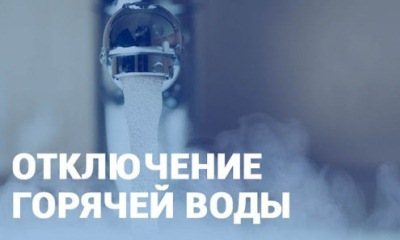
Any problems with the hot water supply may mean either a malfunction of the apartment plumbing, or a breakdown of equipment on the line in the basement.
You need to know that scheduled hot water outages cannot take more than 8 hours a month or 4 hours in a row .
However, if there is an accident on the line, you will have to wait until it is fixed. Longer breaks are also possible here, since restoring the operation of the main line is a complex and time-consuming task.
You can find out about problems associated with weak hot water pressure here. This article will tell you how to recalculate hot water. You can find out more about hot water pumps here.
